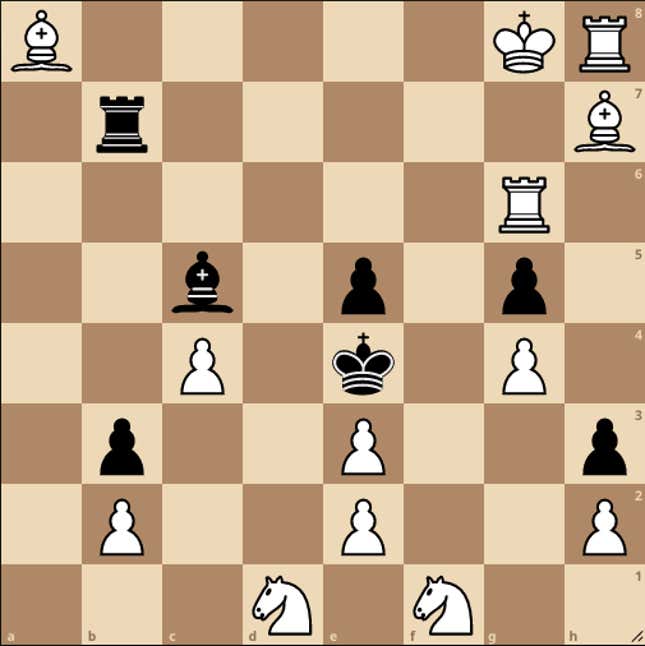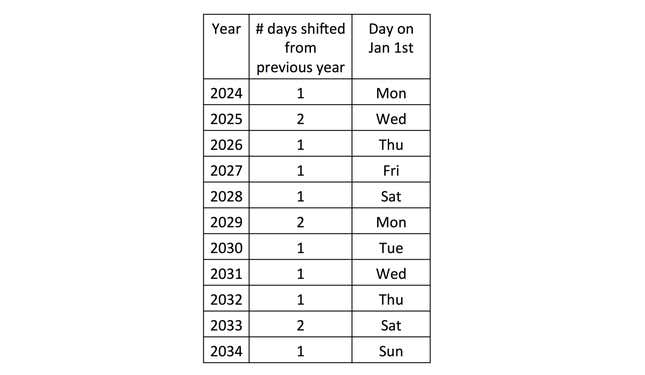ARTICLE AD
I have three chess puzzles for you this week, but you don’t need to know the rules of chess for two of them. These two are variants of the famous eight queens puzzle, which asks solvers to position eight queens on an eight-by-eight board such that no two queens attack each other. The eight queens puzzle requires a little too much trial and error for my taste, which perhaps is why the problem more often shows up in computer science courses as an exercise in writing programs that search through cases for you.
Would Peter Capaldi Return to Doctor Who?
The world of chess puzzles is full of beautiful and often humorous constructions, but sometimes one needs extensive experience to solve or even appreciate them. The most common type of chess puzzle depicts a position and challenges solvers to force a checkmate in a given number of moves. This week’s third puzzle throws a delightful twist into this standard genre, instead asking you to find a move that does NOT instantly checkmate. You’ll need to know the rules of chess for this one. As chess puzzles go, it’s not exceedingly difficult, but hopefully gives a flavor for how amusing these compositions can get.
Did you miss last week’s puzzle? Check it out here, and find its solution at the bottom of today’s article. Be careful not to read too far ahead if you haven’t solved last week’s yet!
Puzzle #25: Chess Puzzles
Queens attack all of the squares in their row, column, and diagonals. Position five queens in a five-by-five board, such that three squares are not attacked by any queen. If you want to play around with configurations on a digital board, I’ve set one up here, cordoning off a five-by-five region with black pawns. Knights attack every square that can be reached in an L shape as follows: two squares horizontally (left or right) and one square vertically (up or down) or two squares vertically and one square horizontally. What is the largest number of knights that you can fit on a standard eight-by-eight chess board, such that no two knights attack each other?In the position below, find a move for white that does NOT cause an instant checkmate. Karl Fabel, an ingenious and prolific chess composer, published this in 1952.

Composed by Karl FabelGraphic: Jack Murtagh
I’ll be back next Monday with the answers and a new puzzle. Do you know a cool puzzle that you think should be featured here? Message me on Twitter @JackPMurtagh or email me at gizmodopuzzle@gmail.com
Solution to Puzzle #24: Recycling Calendars
Did you solve last week’s puzzle in time?
You sell calendars without years written on them. If somebody wants a 2024 calendar, you give them one whose days of the week match up correctly with 2024 (January 1st is a Monday, January 2nd is a Tuesday, etc.)
How many distinct calendar types must you keep in stock to cover all possible years? When is the next year that people will use the 2023 calendar again?What is the largest possible number of years that can pass between uses of the same calendar?Find the answers below. Shout-out to PeterE for sniping all of them and for calling the Gregorian calendar “Greggy’s system”.
1. There are 14 different calendars. Years can begin with any of the seven days of the week, and years either have 365 days or 366 days (leap years). This results in 14 total possibilities.
2. 2034 is the next time the 2023 calendar will be used again. Every non-leap year that passes, the days shift forward by one. Think of it this way: 2023 began with a Sunday, and every seven days after that, the week resets to Sunday (Jan 8th, Jan 15th, etc.). So starting with the 1st and adding any number that’s divisible by seven (7, 14, 21, 28,...) gets you back to Sunday. 364 is divisible by seven (7 x 52 = 364), so adding that to 1 yields 365, the last day of the year. This means December 31st was also a Sunday, leading to 2024 beginning with a Monday. All non-leap years work like this. After a leap year, the days shift forward by two because of the extra day.
With this in hand, we can calculate when the 2023 calendar (non-leap year beginning with Sunday) will recur. Days shift forward by 1 each year, except after a leap year, when they shift forward by 2:

Graphic: Jack Murtagh
Since 2034 is not a leap year and begins with a Sunday, it uses an identical calendar to 2023.
3. The largest possible gap between uses of the same calendar is 40 years. You wouldn’t be alone if you came up with 28. I’ll explain why 28 is a natural guess and then how the gap can actually be as large as 40.
Leap years are rarer than non-leap years, so it stands to reason that gaps will be larger between leap years. After a leap year, the subsequent years shift days according to the pattern: 2, 1, 1, 1, 2, 1, 1, 1, and so on (you can see this in the table above starting at 2025). So every leap year (every four years) is five days shifted forward (2+1+1+1) from the previous leap year (e.g. 2028 is the leap year after 2024 and it begins with a Saturday, five days after 2024’s Monday). Starting at a leap year, every four years, the days shift forward by five and you need to do this seven times before cycling back to the same starting day. It takes 28 years to pass through seven leap years (indeed, 2052 is 28 years after 2024 and the first leap year after it to begin with a Monday).
One huge exception can extend or shrink this number. Years divisible by 100 skip a leap year (unless they’re divisible by 400). 2100, 2200, etc. will not be leap years. Consider the 2072 calendar: a leap year which begins on a Friday. 28 years later will be 2100 and will also begin on a Friday, but it’s not a leap year! We’d have to continue 12 more years before repeating the 2072 calendar in 2112.

 1 year ago
89
1 year ago
89 

